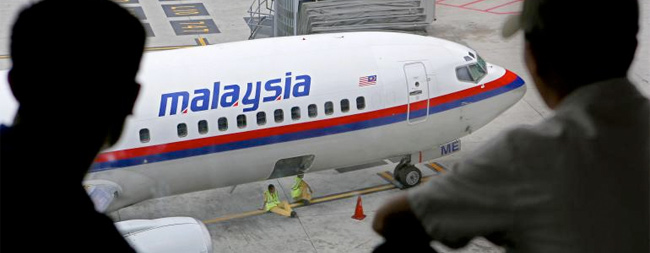Malaysia Airlines: Rebuild, Don't Rebrand
 Two major tragedies in less than six months are two too many for any airline. So Malaysia Airlines, after the disappearance of MH 370 in March and the downing of MH17 over Ukraine in mid-July, is "assessing the future shape of [its] business," according to the airline's commercial director. The Sunday Telegraph reported that current options for the airline's "new era" include a renaming and rebranding.
Two major tragedies in less than six months are two too many for any airline. So Malaysia Airlines, after the disappearance of MH 370 in March and the downing of MH17 over Ukraine in mid-July, is "assessing the future shape of [its] business," according to the airline's commercial director. The Sunday Telegraph reported that current options for the airline's "new era" include a renaming and rebranding.
Given that Malaysia Airlines was already in financial trouble (it lost more than $350 million in 2013 before either accident and another $138 million in the first three months of 2014) a brand do-over looks attractive. The airline wouldn't be the first carrier to rebrand after a fatal crash. ValuJet had the highest accident rate in the low-cost sector when its Flight 592 crashed in the Florida Everglades in 1996, killing all 110 people on board. When ValuJet merged with AirTran a year later, CNN cited its revamped operations: a new logo and slogan as well as retirement of the ValuJet name in favor of AirTran.
Before Malaysia Airlines starts looking at a new name and color scheme, it should know that regaining customers' trust takes more than superficial changes. Not to mention that rebranding wouldn't be cheap for a company already in the midst of a recovery plan to restore profitability prior to the disasters of MH370 and MH17. Repainting a fleet of 151 aircraft, outfitting up to 20,000 employees with new uniforms, changing airport signage, and developing a new website are just the beginning. These aesthetics would be followed by a significant branding and marketing push to help build up the new airline to a similar level of awareness.
However, regardless of any efforts to sever the connection to the old brand and raise awareness of the new brand, Malaysia Airlines' digital footprint wouldn't disappear. Anyone could find months of media coverage about both tragedies with a simple Google search. That legacy story could undermine any marketing investment built around a rebranding. With those potential challenges and no guarantee of success, why not rebuild the current brand? Malaysia Airlines has a strong heritage dating back more than 75 years to 1937 - the same era when surviving U.S. brands like American, Delta and United started operations. It is also one of the few national carriers that existed before the modern nation state it serves – Malaysia formed in 1963. Malaysia Airlines has grown from a single aircraft operator to winning numerous service awards since 2001 and joining the oneworld alliance in 2013. The company should not scrap this story so quickly.
In the interim, Malaysia Airlines should continue to focus on helping relatives of those affected by both tragedies and ensuring the safety of its 50,000-plus daily passengers, as the head of its recently retained crisis PR agency told PR Week. Other short-term PR goals should be clear communication to all stakeholders and greater transparency, which was lacking in the confused response to MH370's disappearance.
While there is no history in the aviation industry of an airline suffering two tragedies in such a short period of time, customers can see past a new name or improved SEO. Trust and confidence in any airline depend on a few simple factors: safe flights, value in ticket prices and high-quality service. A rebranding isn't essential to meet those goals. Operational improvements with a focus on the balance sheet can restore the brand equity that Malaysia Airlines has lost since March.
What's your view on if and when Malaysia Airlines should consider a rebranding? ![]()
